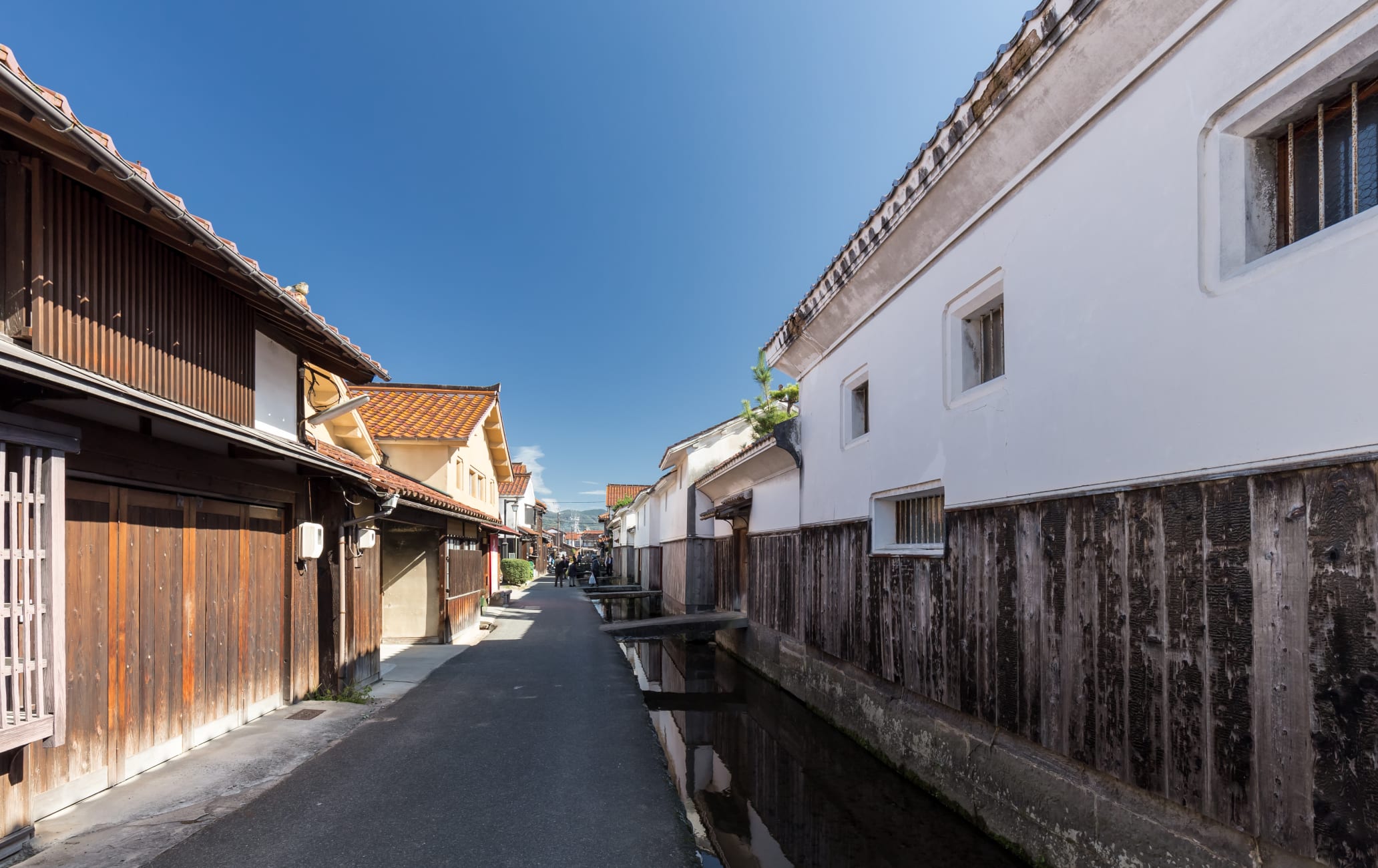Take a trip back in time through quiet, historic streets
Strolling past the white-walled traditional Shirakabe Warehouses lining the Tamagawa River makes for a scenic trip back into Japan's past.
How to Get There
The area is a 15-minute bus ride from JR Kurayoshi Station.
From JR Okayama Station, take the Super Inaba Limited Express heading to Tottori and change at Sayo Station to the Super Hakuto Limited Express to JR Kurayoshi Station.
From Osaka or Kyoto Station , there are direct trains to Kurayoshi on Super Hakuto Limited Express.
Quick Facts
The area is considered one of Japan's most important traditional architecture districts
The buildings were typically used as soy sauce distilleries and breweries
Many of the buildings are today used as galleries, tea shops, and other local stores
A scenic walk filled with plenty to see
“Shirakabe” refers to the beautiful, white plastered walls of the traditional warehouses that line a street along part of the Tamagawa River. This street runs for around 400 meters, and its waterways, home to coy carp, are crisscrossed with small stone bridges. This quiet area is a wonderful place for a stroll around a townscape that has changed very little over time.
Exploring the historic structures
The warehouses are located in Utsubuki Tamagawa, at the foot of Mt. Utsubuki. The area once served as the merchants' quarter of the former castle town and is designated as an Important Preservation District for Groups of Historic Buildings. The warehouses and other traditional wooden buildings with red-tiled roofing in the area were built between the Edo period (1603–1867) and the beginning of the Showa era (1926–1989).
Where time stood still
Formerly, these buildings were used for traditional enterprises, such as soy sauce or sake manufacturing, and some of these companies still trade today. Many of the old buildings and warehouses are still being used as workshops by local artisans.
























































